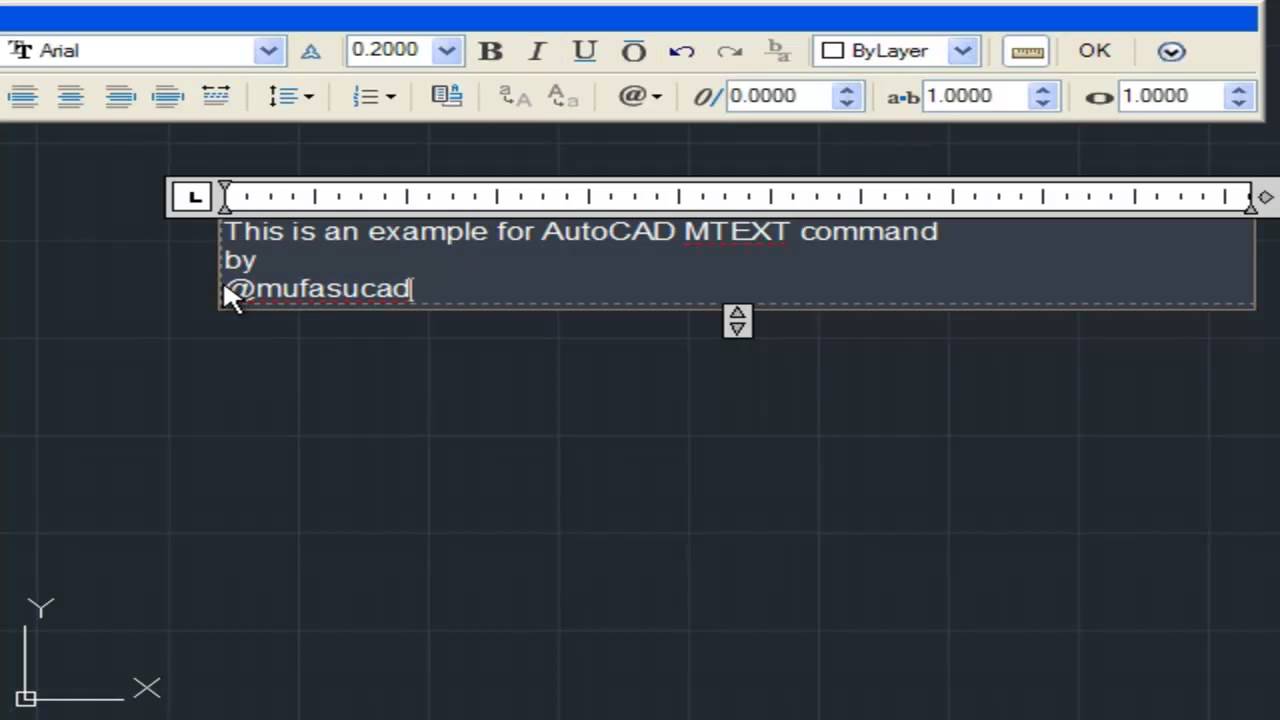
AutoCAD, the industry-leading computer-aided design (CAD) software developed by Autodesk, offers a multitude of powerful tools and commands for creating precise and detailed drawings. Among these tools, the MTEXT command stands out as a fundamental feature for creating multiline text objects with formatting options such as line spacing, text wrapping, bullet points, and columns. In this comprehensive guide, we delve deep into the intricacies of using the MTEXT command in AutoCAD, exploring various methods, techniques, and best practices for optimal utilization.
Understanding MTEXT in AutoCAD:
MTEXT, short for multiline text, is a versatile command in AutoCAD used to create and edit text objects containing multiple lines of text. Unlike single-line text created with the TEXT command, multiline text objects created with MTEXT can span multiple lines and paragraphs, facilitating efficient text editing and layout. MTEXT offers a wide range of formatting options, allowing users to customize text appearance, alignment, spacing, and more to suit specific design requirements and preferences.
Using the MTEXT Command:
AutoCAD offers multiple methods for using the MTEXT command to create and edit multiline text objects in drawings:
1. Command Line Input:
The most straightforward method for using the MTEXT command is through command line input. To create multiline text using the command line, follow these steps:
- Type “MTEXT” in the command line and press Enter to activate the MTEXT command.
- Specify the insertion point for the text by clicking in the drawing area or entering coordinates manually.
- Enter the text content in the text editor window, using line breaks or paragraph breaks as needed.
- Optionally, format the text using the formatting toolbar or the text editor options.
- Click OK or press Enter to confirm and exit the text editor window.
2. Ribbon Interface:
AutoCAD’s Ribbon interface provides a graphical user interface for accessing commands and tools. To use the MTEXT command from the Ribbon interface, follow these steps:
- Navigate to the Home tab on the Ribbon.
- Click on the Multiline Text panel to expand it.
- Click on the Multiline Text icon to activate the MTEXT command.
- Specify the insertion point for the text and enter the text content in the text editor window.
- Format the text using the formatting options provided in the text editor.
3. Toolbar or Tool Palette:
Users can also access the MTEXT command from toolbars or tool palettes for quick access and convenience. Simply click on the Multiline Text tool icon in the toolbar or tool palette to activate the MTEXT command and follow the prompts to create and edit multiline text objects.
Key MTEXT Command Options:
When using the MTEXT command in AutoCAD, users can specify various options and parameters to customize multiline text objects according to their requirements. Key options include:
- Text Style: Choose from a predefined set of text styles or create custom text styles with specific font, height, width factor, and other properties.
- Text Height: Specify the height of the text in drawing units, controlling its size and visibility relative to the drawing scale.
- Text Formatting: Apply formatting options such as bold, italic, underline, strikethrough, superscript, subscript, and text color to enhance text appearance and emphasis.
- Text Alignment: Set the alignment of the text relative to the insertion point, including options for left, center, right, top, middle, and bottom alignment.
Advanced Techniques:
In addition to basic text creation methods, AutoCAD offers advanced techniques and tools for enhancing multiline text objects and efficiency:
- Text Columns: Divide multiline text into multiple columns using the Columns option, allowing for efficient text layout and presentation in drawings.
- Text Frames: Create text frames or boundaries around multiline text using the Frame option, providing visual separation and organization for text content.
- Text Bullets and Numbering: Apply bullet points or numbering to multiline text using the Bullets and Numbering options, facilitating list formatting and organization.
- Text Fields: Insert dynamic text fields such as date, time, filename, sheet number, and custom properties into multiline text using the Fields option, ensuring accuracy and consistency in text content.
Best Practices:
To achieve optimal results when using the MTEXT command in AutoCAD, it’s essential to adhere to the following best practices:
- Plan and Organize: Before creating multiline text objects, carefully plan the content, layout, and formatting of text elements, considering readability, clarity, and visual hierarchy.
- Use Consistent Styles: Maintain consistency in text styles, including font, size, formatting, and alignment, throughout the drawing to ensure uniformity and professionalism in presentation.
- Utilize Text Styles: Take advantage of text styles to streamline text creation and management, defining standard styles for different types of text objects such as titles, headings, body text, and annotations.
- Optimize Text Placement: Place multiline text objects strategically to avoid clutter and overcrowding, ensuring sufficient spacing and alignment for readability and visual clarity.
- Review and Proofread: Review text content for accuracy, completeness, and clarity before finalizing drawings, performing spell checks and proofreading to correct errors and improve quality.
Conclusion:
In conclusion, mastering the MTEXT command in AutoCAD empowers designers and drafters to create and edit multiline text objects with precision and efficiency. By understanding the various methods, options, and best practices for using the MTEXT command, users can create text objects that enhance communication, clarity, and professionalism in their drawings and designs. With AutoCAD’s versatile tools and features, designers can achieve precise and effective representation of textual information, ensuring accuracy and effectiveness in conveying design intent and information.